On the long road to 162 games, the Cardinals’ front office faces an intriguing mission: How will the organization’s baseball leaders improve the pitching staff by the July 30 MLB non-waiver trade deadline?
This time around there must be more urgency and a targeted ambition to strengthen the roster.
You don’t make the amazing, stunning monstrous trade for third baseman Nolan Arenado and bring him here to play on a team that stalls out.
Nado wanted out of Colorado, in large part, because the Rox front office went against the pledge to build a winner around him — and then actually did the opposite and allowed the team to fall apart.
And you don’t bring Yadier Molina and Adam Wainwright back for another season — and get quality performances from the icons — only to waste their efforts by shifting into neutral by doing nothing or making a low-impact tweak. This would amount to a betrayal.
Back to Arenado. He can opt out after the season. Obviously he’s strongly inclined to stay. But let’s not be naive children about this. He wanted an additional opt-out provision as part of the trade from Colorado. So anything is possible.
And even if Arenado is still on board for a second season he can opt out after the 2022 campaign. Put it this way: Arenado’s hometown Dodgers NEVER hesitate to go big and do whatever it takes to win the NL pennant and take their best shot at a World Series title.
The stakes are different for chairman Bill DeWitt Jr. and president of baseball operations John Mozeliak. Can you imagine the reaction by Cardinals fans and the Baseball World if the Cards lose Arenado because of their failure to aggressively swing at the opportunity to make impactful trades or pursue free agents so soon after making the deal of the century to get him?
Now, onto the question of need …
Unless some things change dramatically, and soon, pitching upgrades are mandatory. I’m not limiting the scope to pitching, but depending on available deals, pitching is a logical target area and the place to start.
If the injury issues in the outfield become a bigger problem that pull this offense lower, the Cardinals must pursue a solution. Don’t lollygag. The goal is to win a championship.
Run prevention is crucial because it can go a long way in compensating for a leaden offense. Nothing makes a team more vulnerable or helpless than the damage caused by loose run prevention.
Let’s review:
2012: 7th in the majors in run prevention; Cards reach the NLCS.
2013: 5th in MLB in run prevention; Cardinals win the NL pennant.
2014: 7th in run prevention overall, 4th in the NL; Cards reach the NLCS.
2015: 1st in MLB in run prevention; Cards win 100 games and the NL Central title despite having an offense that finished 24th that year with 3.99 runs per game.
2016: 14th overall in run prevention; no playoffs.
2017: 11th overall in run prevention; no playoffs.
2018: 13th overall in run prevention; no playoffs.
2019: 5th overall in run prevention; Cards make it to the NLCS.
2020: 7th overall in run prevention; Cards make the playoffs despite having a brutal schedule caused by their internal Covid-19 disruption.
When the Cardinals finished 7th or better at preventing runs in a season since 2012, they went 6 for 6 in making the playoffs.
When the Cards ranked 11th or worse in preventing runs, they went 0 for 3 in making the playoffs.
Ideally the Cardinals would find ways to address pitching and offense. After all, we’ve seen some of their finest run-prevention seasons tumble in the postseason because of a weak or mediocre offense. I’m just saying that, as of now, and subject to change, I’m inclined to prioritize pitching.
The Cardinals have been passive at the trade deadline for far too long. In recent years they’ve been more enthusiastic about trading players away. Some examples are pitchers Marco Gonzales and Mike Leake, outfielders Tommy Pham and Oscar Mercado, and first baseman Luke Voit. Notable prospects and players collected in those deals include outfielders Tyler O’Neill and Justin Williams, and relievers Giovanny Gallegos and Genesis Cabrera.
But as far as HELP NOW trades? In 2015 the Cardinals acquired a hitter (Brandon Moss) from Cleveland and a reliever (Steve Cishek) from Miami.
In 2014, Mozeliak traded for Cleveland starting pitcher Justin Masterson (fail) and shook things up by dealing pitcher Joe Kelly and faded bat Allen Craig to Boston for starting pitcher John Lackey.
Lackey was a terrific addition, and he paid off again in 2015.
The others, not so much.
I’d be disappointed if the Cardinals choose to sit back instead of charging into the aggressive-buyer mode when the annual trade bonanza begins. This isn’t the time for letting kid relievers get beaten up in the big leagues because you think it will advance their long-term development. This isn’t time for half-measure steps.
I’d prefer a 2011 approach when Mozeliak made a major trade involving two other teams to upgrade his bullpen and rotation. It saved a St. Louis season that climaxed in a World Series championship. Mozeliak did an awesome job of turning weakness into power.
It looks like Mo will have to do it again.
The pitching staff has problems including a dangerously inflated walk rate and a declining strikeout rate.
(All statistics through Tuesday.)
In the bullpen three money relievers have prevented disaster with their stellar work. Alex Reyes, Giovanny Gallegos and Genesis Cabrera have combined for a 1.26 ERA and a 30% strikeout rate.
The other relievers collectively have a 6.43 ERA and a startlingly poor strikeout rate of 18.4 percent.
That’s a cry for help.
With a 14.7% walk rate that’s the worst in the majors, the bullpen’s surface-level ERA (4.23) is unsustainable. This explains why the bullpen crew had a 3.64 ERA in April and are laboring with a 4.60 ERA in may. Based on the low 23% strikeout rate and the ridiculously high number of walks, the bullpen has an expected fielding independent ERA of 5.03. And that number continues to go up.
The starters have, for the most part, effectively worked their way out of jams. The rotation ERA (3.68) ranks 10th in the majors. So what’s wrong with that? Pardon the pun, but it’s a potential house of cards.
The rotation’s 9.4% walk rate is 29th. The strikeout rate (19.6%) is 27th.
Put those two things together and the St. Louis rotation is tied for the worst strikeout-walk ratio in the majors. And that’s why the rotation’s expected fielding independent ERA, 4.66, ranks 29th among the 30 teams. Danger, danger. And another injury would imperil the rotation.
Mozeliak and GM Michael Girsch can attack this in a few different ways: (1) trade for a very good starter, or maybe even two very good starters, then (2) transfer one or two current starters to the bullpen for the necessary reinforcement of a shaky area. Or the Cards could (3) acquire effective relief help and bolster the rotation in a separate trade.
Finally, here are two unacceptable options: doing nothing, or doing very little.
Thanks for reading …
–Bernie
Please check out Bernie’s sports-talk show on 590-AM The Fan, KFNS. It airs Monday through Thursday from 3-6 p.m. and Friday from 4-6 p.m. You can listen live online and download the Bernie Show podcast at 590thefan.com … the 590 app works great and is available in your preferred app store.
For the last 36 years Bernie Miklasz has entertained, enlightened, and connected with generations of St. Louis sports fans.
While best known for his voice as the lead sports columnist at the Post-Dispatch for 26 years, Bernie has also written for The Athletic, Dallas Morning News and Baltimore News American. A 2023 inductee into the Missouri Sports Hall of Fame, Bernie has hosted radio shows in St. Louis, Dallas, Baltimore and Washington D.C.
Bernie, his wife Kirsten and their cats reside in the Skinker-DeBaliviere neighborhood of St. Louis.



